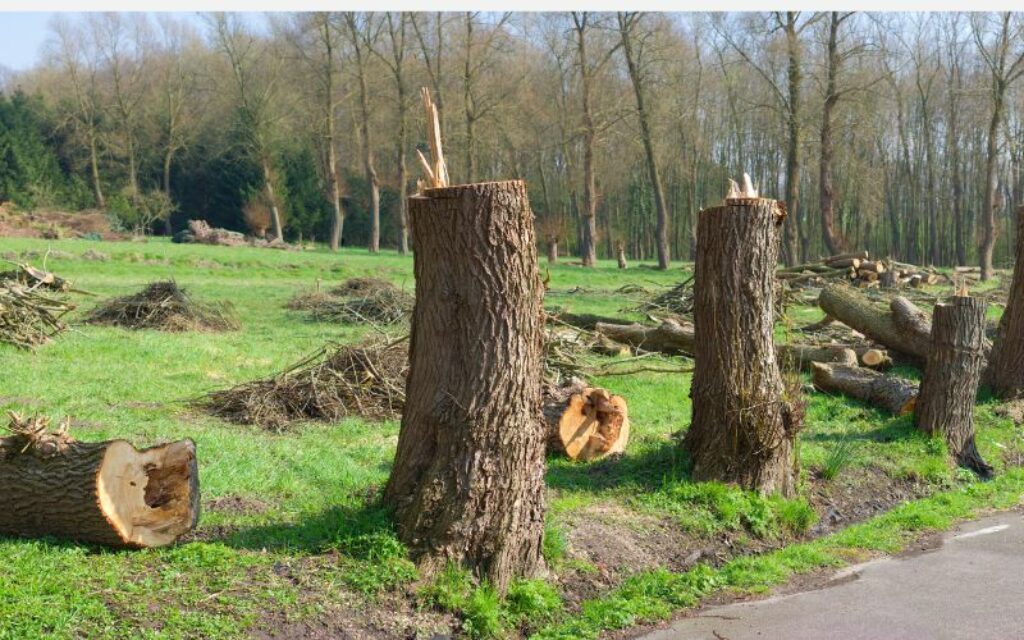You see a big tree that needs to be cut down, and you’re trying to decide whether or not it’s a job for professionals. There are several factors to consider before making the decision:
First, assess if the tree is diseased or rotting. If so, cutting it down on your own may cause further damage to surrounding trees and plants. It might also be dangerous because of the weakened structure to support a charged saw and other tools. A professional arborist can evaluate the condition of the tree more accurately and safely with specialized equipment such as an aerial lift truck.

Second, consider the size and type of tree that needs to be cut down as well as its location in relation to other structures (homes, buildings). Cutting down larger trees requires a lot of strength and skill to safely manage the weight and direction of the tree. Additionally, if the tree is in close proximity to other structures, it is important to bring in a professional arborist who can ensure that the job is done properly and with minimal risk.
Third, identify any local laws or regulations that might restrict cutting down trees on your property or require you to contact city officials before taking action. It is a good idea to consult an expert who knows local laws and regulations regarding tree removal.
Ultimately, deciding whether it’s safe for you to cut down a big tree yourself or hire a professional will depend on the size, condition, location, and available resources at hand. If you’re uncertain about how best to handle the job, it’s best to err on the side of caution and contact a professional.
Also Read: How to Identify Types of Evergreen Trees
They can advise you on how to safely remove the tree and suggest any alternatives, such as trimming or relocation, that might be more appropriate in your situation. Professional arborists have the experience and equipment necessary to complete the job safely, efficiently, and in accordance with local laws.
But what if you decide to do it yourself? Well, in such a case, here are ten things you can do before you start whacking your big tree with an axe.
1. Make sure the area is clear of all people and property, including power lines. Check with local authorities to determine if there are any regulations or restrictions regarding tree removal in your area.
2. Analyze the condition of the tree and decide on the safest way to cut it down. If it is weakened, rotten, or diseased, then cutting it down may be dangerous due to its unstable structure.
3. Estimate the weight and height of the tree, as well as how far away from other structures it is located, in order to determine which type of saw you should use for cutting (for example, electric chainsaw vs. hand saw).
4. Prepare a plan based on your assessment of the tree and available resources. This plan should include which parts of the tree to cut first, where to place ropes or wedges for support, and what type of chainsaw to use.
5. Select a cutting angle that will allow the falling tree to avoid structures and other obstacles on your property.
6. Determine the most secure base from which the tree can be felled (usually on the side away from other structures).
7. Set wedges in place along the line of desired fall—these will help direct the tree in its fall and minimize the risk of injury due to unpredictable direction changes as it falls down.
8. Make two cuts at an angle towards each other near ground level so that they form an “X” shape—this will help determine the direction in which the tree will fall.
9. Cutaway at each of the branches, starting at the top and gradually working your way down to ground level.
10. Once you have made all necessary cuts, retreat to a safe distance and observe as the tree falls in its desired direction—if it does not fall as expected, take further safety precautions immediately (such as running away).
Following these steps will help ensure that the job is done properly and with minimal risk to people, property, and the environment. Cutting down a big tree can be an exciting and rewarding project if done correctly!
Take safety precautions seriously: If you decide to tackle the job yourself, always wear protective gear such as gloves, boots, hard hats, and eye protection. Use caution when working around power lines; contact local authorities before cutting near any structures or utility poles. Be aware of your surroundings at all times and keep yourself, your family, and other people away from the area while you are cutting. Good luck! And don’t forget: when in doubt, call a professional. They can provide valuable advice and resources to ensure that your project is completed safely and without incident.